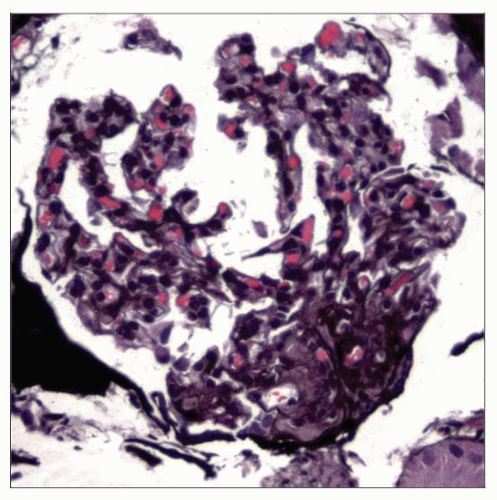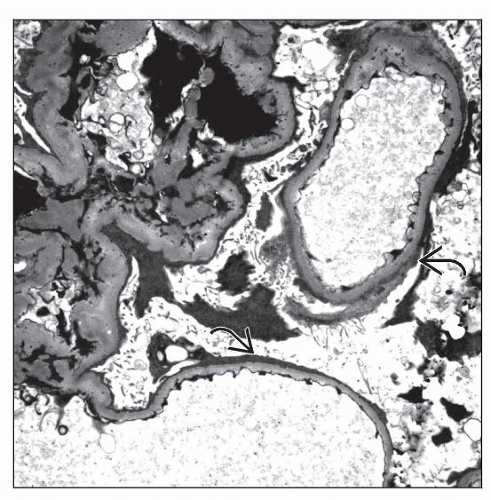Podocin Deficiency
Helen Liapis, MD
Joseph Gaut, MD, PhD
Key Facts
Clinical Issues
Proteinuria, may be nephrotic range
90% of familial cases progress to ESRD within ˜ 6 years
35% of sporadic cases progress to ESRD within ˜ 6 years
Microscopic Pathology
Focal and segmental glomerulosclerosis (50%)
Minimal changes (50%)
Mesangial hypercellularity
Ancillary Tests
Sequencing NPHS2 gene
Immunohistochemistry with antibody to human podocin
Top Differential Diagnoses
Idiopathic FSGS
Other inherited forms of FSGS
Minimal change disease
 A 10-year-old boy previously diagnosed with minimal change disease had persistent proteinuria of 3 g/d. A repeat biopsy showed perihilar FSGS. Podocin was undetectable by immunofluorescence. |
TERMINOLOGY
Definitions
Inherited or sporadic steroid-resistant nephrotic syndrome secondary to mutations in NPHS2 gene
ETIOLOGY/PATHOGENESIS
Genetics
Mutation in NPHS2
Encodes podocin
Important for maintaining podocyte foot process structure and signaling
Interacts with nephrin and CD2AP to form part of slit diaphragm
Autosomal recessive inheritance
Maps to chromosome 1q25-q31
> 50 mutations reported to date
CLINICAL ISSUES





